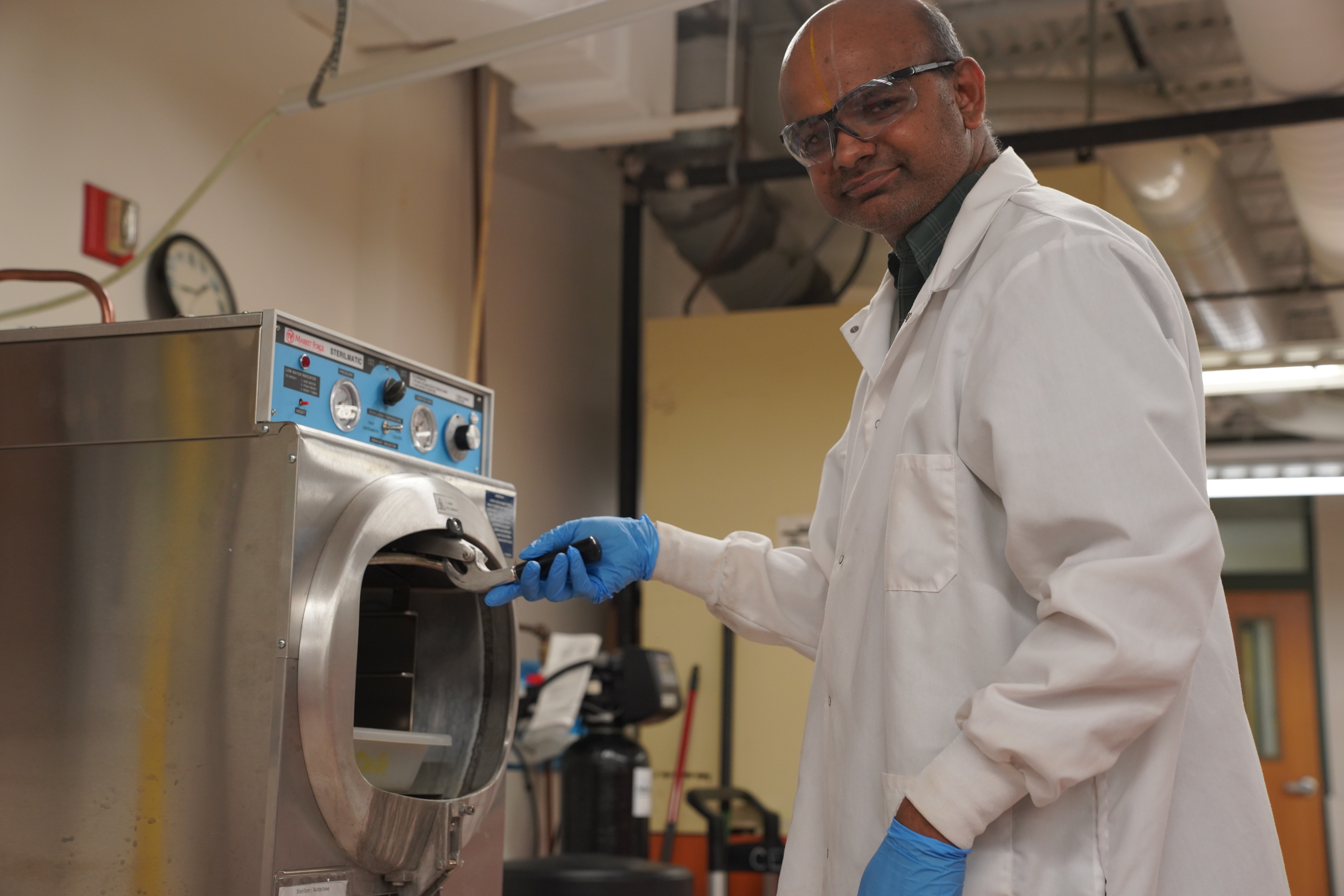A little goes a long way.
A thin, single layer of graphene material only 1 atom thick may reduce metal pipe corrosion rates as much as 100 times, according to Govind Chilkoor, a research scientist at the South Dakota School of Mines & Technology. These new crystalline 2D materials could mean big savings to industries.
Corrosion costs the U.S. water and wastewater industry about $36 billion annually, or 3.1% of the nation’s gross domestic product, according to a 2002 U.S. Federal Highway Administration study. Those annual losses have now risen to an estimated $58.5 billion.
“All the piping and equipment used to treat water and wastewater can be prone to corrosion,” explained Chilkoor. He developed and tested 2D materials as part of his doctoral work at South Dakota Mines under the tutelage of associate civil and environmental engineering professor Venkata Gadhamshetty, who received a National Science Foundation CAREER award to support the 2D materials research for microbial corrosion research.
As part of that project, Chilkoor examined whether 2D materials can reduce the impact of sulfate-reducing bacteria, one of the main culprits responsible for corrosion in the water and wastewater industry. “Steel exposed to chemicals corrodes at a rate of 1.3 milliinch (thousandths of an inch) per year, but in the presence of sulfate-reducing organisms, it will corrode 24 milliinch per year,” he said.
Bacterial buildup and corrosion
As wastewater flows through a metal pipe, sulfate-reducing bacteria begin colonizing the interior surface and form a slimy film within 10 days. The bacteria excrete a sticky polymer substance and, as the microorganisms accumulate, form a biofilm. “If you put a biofilm under a scanning electron microscope, you will see lots of live bacteria,” he explained.
The sulfate-reducing bacteria corrode the metal in several ways, Chilkoor said. First, the bacteria pull electrons from the steel surface. Second, the bacteria consume organic matter in the wastewater, producing hydrogen sulfide that then erodes both cast iron and stainless steel.
Applying polymer coatings to reduce corrosion has had limited success. The thin plastic coatings are prone to biodegradation. “The microbes get into small pores in the coating and consume the plasticizer in the polymer,” Chilkoor explained.
Polymer coatings can also become brittle, crack and peel, which then releases toxins from pigments and organic compounds in the polymer into the water. “This can be a problem for humans and aquatic life,” he noted.
Furthermore, for applications such as heat exchangers designed to cool a hot liquid, the polymer coatings can disrupt functionality, Chilkoor pointed out.
Developing 2D materials
“With 2D materials, we can make thin coatings, less than 1 nanometer thick,” he explained. When Chilkoor applied 2D graphene to metal and exposed it to sulfate-reducing bacteria in what is known as a corrosion cell, the microbes did not attach to the surface.
“Graphene can be very antimicrobial. It can induce oxidative stress and the bacteria will die,” he said. In addition, graphene is highly conductive and will have good heat transfer in a heat exchanger.
“What’s exciting about 2D graphene is the thinner it gets, the stronger it is,” he said. “One single sheet is very strong, in terms of tensile properties and Young’s modulus.”
While polymer coatings use a filler to enhance strength and reduce porosity, 2D materials can use 1 to 2% as much material and get the same properties as a polymer with 60% filler, Chilkoor explained.
In addition, he developed a 2D material using hexagonal boron nitride. Known as white graphene, its properties are similar to graphene, Chilkoor explained. “A single layer of boron protects metal, but it is electrically insulating.”
Chilkoor and Gadhamshetty are continuing their work through the state’s newest research center, 2D-materials for Biofilm Science and Engineering Centerr, or 2DBEST, which seeks to build nanocoatings for corrosion prevention and agricultural and other applications. Gadhamshetty is one of the center’s lead researchers working on 2D materials and metal corrosion.
The research center is funded through a five-year, $20 million National Science Foundation Research Infrastructure Improvement Track-1 grant awarded to the South Dakota Established Program to Stimulate Competitive Research and the South Dakota Board of Regents. Faculty from 11 South Dakota universities and colleges are involved in the center, including eight South Dakota State University researchers who will use 2D graphene to improve the ability of nitrogen-fixing bacteria to colonize soybean roots.
Currently, the corrosion group is using chemical deposition equipment, which accommodates only small metal pieces, to synthesize the 2D materials, Chilkoor said. To bring 2D materials to a commercial market, “we need to coat a whole pipeline.”
Gadhamshetty said,“ The goal of the 2DBEST is not only to be on the cutting edge with respect to 2D materials synthesis equipment and expertise, but equally significant is to use this research to understand and cater to the unique needs of agriculture, biotechnology and coating industry and small scale businesses in South Dakota and beyond.”
As part of 2DBEST’s infrastructure-building efforts, the researchers will purchase new chemical vapor deposition and pulsed laser deposition equipment that will help move 2D materials toward commercialization.
Original post https://alertarticles.info
